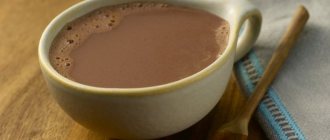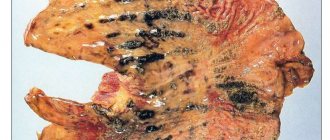- April 26, 2019
- Diseases and conditions
- Ulyana Romanova
Duodeno-gastric reflux is a pathology characterized by the reflux of the contents of the duodenum into the stomach cavity.
As a rule, it is a complication of any gastrointestinal disease. It cannot be ignored - thorough treatment is necessary. It is prescribed by a doctor after examination and diagnosis. Therefore, now it is worth talking about the treatment of duodeno-gastric reflux with folk remedies - although they require consultation with a doctor, they are more universal.
Prerequisites
It is worth briefly discussing the causes of duodeno-gastric reflux. In fact, a variety of factors are important in the development of pathology - impaired motility, insufficiency of the pyloric part of the stomach, increased pressure in the small intestine, and the specific contents of the duodenum.
As a rule, this disease accompanies ulcers, gastritis, duodenostasis, problems with the tone of the sphincter of Oddi, stomach cancer, and gallbladder-related ailments. In general, this symptom can be a consequence of any dysmotor disorder.
Prevention for duodenogastric reflux
Speaking about prevention, experts point out that the diet must be maintained without fail and after all negative symptoms have been eliminated, the patient’s condition improves. In addition, the measures presented include avoiding overeating and eating as evenly as possible. This will make it possible to normalize all processes in the stomach and prevent the condition from worsening.
As noted earlier, after eating food it is strongly recommended to avoid any physical activity, as well as simply awkward or uncomfortable positions. This aggravates everything related to the course of the disease and the process of digesting food. In order for prevention and diet for a condition such as duodenogastric reflux to be effective, it is necessary to minimize the use of coffee and chocolate, the consumption of fresh baked goods, as well as fatty and fried foods, and alcoholic beverages that can provoke bile.
In addition to the presented preventive measures, I would like to note other measures that will help you recover from this disease much faster. They are no less important than diet, and therefore must be taken into account by every patient.
Symptoms
They are unpleasant and non-specific. The pathology in question is characterized by vague, diffuse pain in the upper abdomen (spastic), which usually occurs after eating.
Also, many patients experience increased flatulence, heartburn, belching of air, vomiting with bile impurities, as well as regurgitation of food and acid.
Another common concern is bitterness in the mouth and a yellow coating on the tongue. If you do not seek help from a doctor in time, the disease will be fraught with consequences. Specific changes will begin to occur in the esophageal mucosa, and this may lead to the development of adenocarcinoma, a malignant tumor of the esophagus.
There is also a high probability of developing toxic-chemical gastritis type C, which is accompanied by constant reflux of bile and chemical damage to the mucous barrier. Based on this, you can understand what duodeno-gastric reflux means. This is a serious disease that requires urgent and competent treatment.
Basics of treating bile in the stomach with diet
It is very important that duodenogastric reflux is treated in a comprehensive manner. In the vast majority of cases, its symptoms are unambiguous, but a diagnostic examination is still required. This will make it possible to prescribe the most correct treatment related to all functions in the stomach, which will eliminate the possibility of complications and other critical consequences in the future.
In general, the patient needs to change his own lifestyle so that the diet is also complete . It is strongly recommended by experts to give up exposure to bad habits, namely smoking and drinking alcoholic beverages. The use of certain medicinal names, in particular aspirin, choleretic drugs, and caffeine, is permissible only as prescribed by a specialist.
In addition, patients need to monitor their own weight as carefully as possible and avoid the possibility of developing obesity and other abnormalities in the stomach. This is also why following a diet for a condition such as duodenogastric reflux is a prerequisite for the recovery process.
Potato juice
It is recommended to take it in the first two to three days of the acute period of the disease. It is rich in microelements, minerals and vitamins, and also contains starch, thanks to which it gently envelops the esophagus, thereby reducing the concentration of gastric juice and eliminating painful heartburn.
Regular use of this elixir on an empty stomach leads to scarring of ulcerative lesions, improved liver function, elimination of edema and problems with bowel movements.
Potato juice is easy to prepare. You need to grate well-washed, peeled tubers, and then squeeze out the resulting mass using gauze. 100 ml per day is enough. Take on an empty stomach.
Proper nutrition for erosive gastritis and reflux
Hello, dear readers!
There are many different gastrointestinal disorders that can affect how you feel. Erosive gastritis is one such disorder that can cause severe pain. Regular use of painkillers and steroids can slowly eat away at the lining of the stomach and intestines, leading to the formation of small ulcers. You end up feeling extremely uncomfortable every time you eat something.
Celery juice
This is a very valuable elixir of health. Its “superpower” lies in the ability to cleanse the body of poisons, toxic substances and congestion. In general, the beneficial properties of celery juice are numerous, and here are just a few of them:
- Gentle cleansing of the body, normalization of stool, fight against constipation and comprehensive improvement of the gastrointestinal tract.
- Activation of fat breakdown and removal of excess fluid.
- Normalization of water-alkaline balance in the body.
- Normalization of peristalsis, increasing the absorption of nutrients.
- Saturation of the body with essential amino acids, macro- and microelements, vitamins (E, K, C, A, B).
- Cleansing blood channels from cholesterol plaques.
- Decrease in intracranial and blood pressure.
- Providing antiallergic, analgesic, antimicrobial and hypnotic effects.
And these are just some of the beneficial properties of celery juice. The main thing is to cook it correctly! This is done simply: well-washed stems are passed through a fine grater, meat grinder or juicer. If one of the first two methods is used, then the mass will need to be squeezed out through gauze.
You can also make a smoothie. To make such a drink, you need to put the petioles in a blender along with pieces of ice.
If you decide to use celery in the treatment of duodeno-gastric reflux using folk remedies, you can also make an infusion. You just need to pour purified water (500 ml) over the chopped petioles (50 g) and let it brew for 4 hours. Then you can drink.
How to use this health elixir correctly? It is recommended to start with a serving of 20-30 ml three times a day. Then, when the body gets used to it, you can drink celery juice on an empty stomach in the amount of 100 ml. And definitely immediately after spinning! The drink oxidizes in a matter of minutes and loses its benefits.
By the way, since its taste and smell are specific, you can add a little honey. 12 grams are enough for 100 ml. You can also combine it with apple or orange juice, keeping the proportions 3:2.
Healing fees
Since we are talking about the treatment of duodenogastric reflux with folk remedies, it is necessary to talk about herbs that can be used to improve the functioning of the gastrointestinal tract. Here are some healing fees:
- Mix St. John's wort, chamomile and yarrow in equal proportions. Then take 1-2 tsp. and pour a glass of boiling water. Let it brew for 15 minutes, then strain and drink, mixing with a small amount of honey. This tasty and healthy tea can be consumed several times a day.
- Take 2 tbsp. l. smoke herbs and pour boiling water over it (0.5 l is enough). Keep covered for one hour. Then every 2 hours you need to take 50 ml of the resulting infusion.
- Recommended 2 tbsp. l. Pour forest marshmallow root with water (500 ml) and let it brew for 5-6 hours. The resulting volume should be taken in small portions throughout the day until bilious vomiting or other unpleasant manifestations of the disease stop.
- Mix angelica root (25 g), calamus (50 g) and sage (50 g). Then take 1 tsp. composition and brew it with a glass of boiling water. Cover with a lid for 20 minutes, and after the time has elapsed, strain and drink. You can add a little honey. You should drink three times a day, an hour after meals.
- Take 1 tsp. rue and brew with boiling water. Then strain and drink as tea. You can also sometimes chew 1-2 leaves after meals.
- Mix lemon balm, motherwort, chamomile, flax seeds and licorice root in equal proportions. Everything needs to be mixed, crushed well. Then 2 tbsp. l. pour boiling water (500 ml) and place in a steam bath for 10 minutes. After the time has passed, remove and strain after 2 hours. You need to drink 100 ml at a time.
In fact, a variety of herbs are used to treat duodenogastric reflux using folk remedies. You can combine white jasmine, calendula, fireweed, oregano, mint and anise, horsetail with wormwood and sage, trifoliate with yarrow, fennel fruits and chicory herb, as well as other phytocomponents. There are a lot of herbs that reduce the acidity of the stomach and gently envelop its lining.
Symptoms of the disease
The problem in detecting and further working on this problem is that the pathology itself, as a rule, occurs without pronounced symptoms. However, in some cases, the following signs of the disease are present:
- Dizziness, a state of general weakness.
- Reluctance to eat, weight loss.
- Painful sensations in the stomach, especially after eating.
- A feeling that the stomach is full both during and immediately after eating. Often accompanied by bloating, belching, and a bitter taste.
- Constipation/diarrhea, which may alternate.
- Sometimes severe dry mouth occurs, causing small ulcers to appear on the skin around the lips.
- Nausea and vomiting, which is mixed with bile.
Symptoms, treatment and diet for reflux gastritis should be taken into account by everyone who suffers from problems with the gastrointestinal tract. The thing is that quite often patients do not even suspect that there is a problem. Due to the absence or weak manifestation of signs, this is understandable.
Important! Regularly conduct complete examinations with a gastroenterologist, immediately contact a specialist if there are deviations that may seem unimportant to you. Any little things can signal a serious pathology.
Flax seeds
This is a real storehouse of a variety of vitamins, as well as indigestible fibers, which perfectly cleanse the intestines of toxins and waste, and also stabilize digestion.
It is recommended to make a decoction from flax seeds. It effectively helps to cope with almost any gastrointestinal pathology, enveloping the gastric mucosa, thereby protecting it from the negative effects of bile salts.
The preparation of the product is elementary: you need to pour 1 tbsp. l. seeds with cold water (100 ml is enough) and leave to infuse. Several hours should pass - during this time a sufficient amount of mucus will be released.
How to properly prepare a decoction of flax seeds is clear, but how to take it? You should drink the resulting composition on an empty stomach, before meals. Three times a day is enough, so it’s better to cook ahead.
There is another recipe. You need to take 2 tbsp. l. seeds and pour hot water (400 ml) over them. Then cook for 10 minutes over low heat. Then remove it, and when it cools to room temperature, strain. Drink 100 ml warm half an hour before meals.
Diet food
Almost all deviations from the norm that are associated with the gastrointestinal tract are accompanied by therapeutic nutrition.
This integral part of therapy allows you to restore the correct flow of all processes in the body. This disease is characterized by specific symptoms, so all treatment is aimed at restoring motility function in the intestine. In addition, the treatment ensures the normalization of microflora, binds bile acids, and also neutralizes them. All this helps reduce the negative effect on the gastric walls. A diet for gastric reflux gastritis works exclusively in conjunction with drug treatment. Only in pairs can therapy restore the body and bring all systems into proper condition. The diet for neutralizing acids should be as gentle as possible, therefore it cannot include the following foods and dishes:
- High fat content.
- Too spicy and spicy.
- Salty.
- Fried.
- Canned, pickled.
- Smoked.
Other means
There are many other medicines recommended by traditional medicine. Here are others, no less popular:
- You need to squeeze out half a glass of potato juice and then drink it on an empty stomach. Be sure to immediately eat a spoonful of sugar.
- A medium-sized tuber should be thoroughly washed and, without peeling, divided in half. Then boil it in a small amount of water, drain the broth, and drink the entire volume in small portions throughout the day.
- It is necessary to crush 2 tsp. dill seeds and pour a glass of boiling water. After two hours, strain. Drink 1 tbsp. l. before every meal.
- Grate one apple and two earthen pears, mix and eat immediately. It is recommended to do it twice a day.
- Rinse the millet cereal thoroughly with boiling water. Then take and eat 2 tsp. You can drink it with a small amount of water.
- Place fresh dandelion flowers in dense layers in a three-liter jar, sprinkling with sugar. When the container is full, you need to crush them, and then add more raw materials. And so on until the jar is completely compacted. After a couple of days, a syrup will begin to form - this is what you need to drink 1 tsp three times a day, diluting it in a glass of water.
- Tear off a thick aloe leaf and remove the skin and thorns. Squeeze out the juice. Take 30 ml and dilute in 60 ml of water and drink.
- Crush a walnut and fill it halfway into a glass jar of any size, depending on how much raw material is available. Then add the same amount of honey. Mix thoroughly and eat 1 tsp. the resulting mixture after each meal.
Nutrition rules
No traditional medications or folk remedies will help if a person does not follow a diet for stage 1 duodeno-gastric reflux (or any other). And here are the general recommendations that you need to take into account first:
- You need to eat often and in small portions. Portions should be small, and the interval between meals should be 2.5-3 hours.
- Food must be chewed thoroughly and slowly. If poorly crushed, coarse pieces get into the esophagus, they can injure the mucous membrane, disrupting the motility of the gastrointestinal tract.
- The last meal should be no later than three to four hours before bedtime. This will help prevent the backflow of duodenal juice, which occurs due to the horizontal position the body occupies during sleep.
- It is necessary to exclude all unhealthy foods from the diet - fast food, everything spicy, salty, fatty, fried, sweet carbonated drinks, chocolate, alcohol, as well as all foods that increase acidity.
- You need to drink a lot of free liquid - purified or mineral water, weak healthy teas, freshly squeezed juices, decoctions, infusions, etc.
- You should only eat food at normal temperature. Under no circumstances should it be too cold or too hot.
What can be said about the menu provided for in the diet for duodeno-gastric reflux? It can be quite varied - there are many recipes for healthy dishes. The main thing is to adhere to these recommendations. A properly formulated diet and diet reduces the severity of unpleasant symptoms and also neutralizes high acidity.
This is important, since otherwise an inflammatory process in the mucous membrane and the formation of erosion may begin.
Classification
With duodenal reflux, pancreatic juice mixes with bile. As a result, a liquid with very aggressive properties is formed, which negatively affects the condition of the gastric mucosa. The composition of the substance is so caustic that it destroys its protective barrier. Gradually, the shell is damaged, these changes lead to serious consequences. The degree of damage determines the forms of DG reflux:
- Superficial. As a result of indigestion, the gastric mucosa is damaged, but for now only its outer layer is affected.
- Catarrhal. The mucous membrane is affected over the entire area. Most often, swelling is observed. Over time, the inflammatory process develops. In response to allergic reactions, long-term use of certain drugs causes so-called catarrhal reflux.
- Erosive. It often occurs if the patient does not adhere to the doctor’s recommendations regarding nutrition and regimen. For example, alcohol consumption or frequent stress can lead to this. As a result, small ulcers appear on the walls of the stomach.
- Biliary. This form of the disease develops when bile excretion is impaired. In severe cases, it can lead to liver dysfunction.
With duodenal reflux, pancreatic juice mixes with bile
In addition, with gastroduodenal reflux it is customary to distinguish the severity of the pathology. It depends on the duration of the process. Throughout the course of the disease, symptoms may change. During diagnosis, the severity of GHD is determined by analyzing contents from different parts of the stomach.
Sample menu
And you can get acquainted with it by understanding the question: “What is duodenogastric reflux?” The diagnosis is unpleasant, but even with it you can eat well. Here's what a diet for one day might look like:
- Breakfast: oatmeal with water and a glass of cocoa.
- Snack: fresh cottage cheese with the addition of grated fruit.
- Lunch: vegetable puree soup, a small portion of buckwheat, steamed pollock and a glass of tea.
- Afternoon snack: yogurt and some biscuits.
- Dinner: a serving of rice porridge with butter, a vegetable salad and a glass of cocoa.
- A couple of hours before bed: a glass of milk with dry cookies.
Here's another option:
- Breakfast: steam omelette and tea.
- Snack: vegetable salad and compote.
- Lunch: vegetable soup and boiled fish with a portion of rice.
- Afternoon snack: oven-baked apple, some cookies and tea.
- Dinner: vegetable puree with a piece of boiled meat.
- A couple of hours before bed: a glass of whole milk and a cracker.
In general, at first, of course, it may not be easy to follow the new regime and menu, but this diet cannot be called inferior - the products included in it contain all the substances necessary for the body.
Duodeno gastric reflux: 11 main manifestations and review of medications for treatment
Duodeno-gastric reflux is a very unpleasant problem, which is accompanied by feelings of discomfort, pain, burning in the stomach and other unpleasant symptoms.
Moreover, this situation is not always pathological. According to statistics, GHD occurs in approximately 15% of people who do not have problems with the digestive system.
The reasons for this are unsystematic eating disorders, heavy physical activity, and stress.
Expert opinion
Sevastyanov Roman
General practitioner, hepatologist, gastroenterologist, highest qualification category. Site Expert
We can talk about the disease only in cases where reflux occurs regularly and the patient experiences discomfort for a long period of time. In this case, heartburn may be a symptom of serious gastrointestinal diseases. Therefore, if a burning sensation occurs, you should consult a doctor and undergo an examination, especially if this situation occurs frequently.
What it is?
Duodeno-gastric reflux is a condition that is not always a sign of pathology of the digestive tract - the reflux of duodenal contents into the stomach is detected in approximately 15% of the healthy population, mainly at night.
The disease is considered pathological if, during daily intragastric pH-metry, there is an increase in the acidity of gastric juice above 5, not associated with food intake and persisting more than 10% of the time. This disease accompanies many ailments of the initial parts of the digestive tract, but in approximately 30% of patients it can be considered an isolated pathology.
Causes of the disease and risk groups
Duodenogastric reflux can occur as a result of various unfavorable causes. These can be either single factors or serious diseases of the digestive system, or abnormalities in the structure of the gastrointestinal tract. The most common reasons include:
- Violation of the diet, when after a long fast a person immediately eats a large portion of food;
- Consumption of foods that increase the acidity of gastric juice, as well as foods that are difficult to digest;
- Motility disorders of the muscle tissue of the stomach or intestines;
- A sharp increase in pressure in the intestines (for example, as a result of heavy lifting, active physical activity);
- Uncontrolled use of certain groups of drugs. First of all, these are choleretic drugs, as well as NSAIDs. Preparations of natural origin containing plant extracts can also have a negative impact on the process of food promotion;
- Features of the structure of the pyloric part of the stomach;
- Congenital anomalies of the development of the child’s digestive system (such disorders arise even during the formation of the food tube, from which the gastrointestinal tract is subsequently formed;
- Stomach diseases in acute or chronic form;
- As a result of endoscopic examinations or surgical operations, the functioning of the stomach and upper intestine may be disrupted, which is accompanied by the appearance of heartburn and GHD;
- Late pregnancy, when an enlarged uterus puts pressure on the abdominal organs, disrupting their function;
- Frequent stress and overwork;
- Excess body weight.
Reasons for development
The causes of duodenogastric reflux can be divided into external and internal. By external we mean factors that directly depend on a person’s behavior and living conditions. For example, statistically, GHD is more common in people with:
- physical inactivity;
- poor nutrition;
- smoking;
- alcoholism;
- taking medications during pregnancy;
- other factors that contribute to tissue damage, despite the gastric mucous barrier protecting them.
The symptom is also found in the clinical picture of the following pathologies:
- decreased tone of the muscles of the gastric openings;
- hiatal hernia;
- increased duodenal pressure;
- cholecystitis;
- pancreatitis;
- Botkin's disease.
Sometimes the release of the contents of the small intestine back into the stomach cavity occurs after surgical operations on the organs of the gastrointestinal tract.
Prevention of duodenogastric reflux
Poor nutrition and its consequence, obesity, provoke the development of GHD. Therefore, keeping your body in good shape and paying attention to the food you eat are the main preventive measures in maintaining your health.
In addition, you should promptly seek professional help in case of unpleasant symptoms, treat diagnosed diseases of the digestive system, listen to the advice of doctors, following their recommendations.
Stages and types
In the typology of destructive processes, 4 types of reflux are distinguished:
- superficial, only the cells of the mucous membrane are affected;
- catarrhal, accompanied by an inflammatory process;
- erosive, foci of atrophy form on the mucosa;
- biliary, when the outflow of bile from the gallbladder into the duodenum is impaired.
There are 3 degrees of development of duodenogastric reflux:
- The first degree of GHD is a moderate process. This phase is characterized by the discharge of a small amount of the contents of the duodenum. Irritation of the gastric mucosa manifests itself in an unexpressed way. About 50% of people may experience this problem.
- The second degree is characterized by the introduction of a large amount of alkaline medium. At this stage, the development of an inflammatory process is often observed, which leads to new gastrointestinal diseases. This degree of disease occurs in 10% of people.
- The third degree is a pronounced process, which is accompanied by pain, nausea, and vomiting. There is an unpleasant odor from the mouth, the patient complains of heaviness in the stomach. An examination by a specialist makes it possible to record a clear clinical picture of the development of pathology.
The danger of duodenal gastric reflux is that the disease can cause ulcers to appear on the gastric mucosa. This occurs as a result of mixing bile and pancreatic juice, which form an aggressive environment, destroying the mucous membrane.
Source: https://gb4miass74.ru/bolezni/duodeno-gastralnyj-reflyuks-lechenie.html
Recipes
It’s impossible to list them all! There are dozens of interesting dishes that you can eat and not be afraid of aggravating the symptoms of duodeno-gastric reflux. One of the most popular is cottage cheese casserole. Elementary preparation:
- Mix low-fat cottage cheese (500 g), sour cream, fructose and semolina (4 tbsp. L.) and egg (1 pc.).
- Grind everything in a blender. You should get a homogeneous mass.
- Place the mixture into the multicooker bowl.
- Cook on baking mode for 50 minutes.
Many people love pumpkin puree soup. It's also easy to prepare:
- Peel 2 potatoes and 500 grams of pumpkin.
- Finely chop everything.
- Pour in one glass of purified water and simmer over low heat.
- After cooling the vegetables, grind them in a blender.
- Place the mixture in a saucepan and pour in enough hot milk to obtain the consistency of liquid sour cream.
- Season with a pinch of ginger and salt, then cook for another 4-5 minutes.
A baked apple can be an excellent dessert. It’s better to cook several pieces at once: remove the core from the fruit and add a spoonful of sugar mixed with water in equal proportions. Then the fruits are placed on a baking sheet and placed in a cabinet preheated to 180 °C for 15 minutes.










